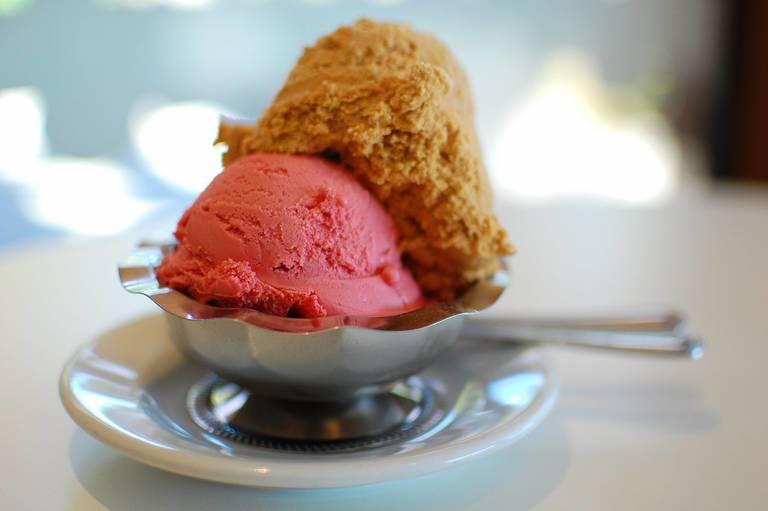
Science's newest miracle sugar has a not-so-sweet story to teach businesses these days: Be prepared for unexpected results when you tinker with Mother Nature's ingredients.
We so often hear about the remarkable benefits that can come from copying, or borrowing from nature. Thousands of inventions, ranging from inconspicuous flooring in the back of a popular hatchback to surgical materials designed to save lives have a common architect: the environment. Biomimicry is still the greatest free resource when it comes to solving modern-day design problems.
But one human-engineered ingredient patterned after a naturally occurring sugar is forcing scientists to rethink their strategy. A disaccharide sugar that is used in ice cream and some fast foods, has been blamed for hundreds of thousands of cases of Clostridium Difficile.
The modern-day version of the disaccharide sugar, Trehalose, has been touted as a savior for many things. It works well in food processing as an alternative to conventional sugar, it can be used as a thickener and moisture preserver, and best of all, it's cheap.
That's because of an enzymatic process developed about 25 years ago, which reduced the price of manufacturing Trehalose from about $700 per kilo to $3. With the sudden drop in price, the sugar, which is found naturally in fungi, bacteria and invertebrates but is hard to extract, became the perfect additive for common products like ice cream.
But appears humans aren't the only ones that find the sweet, starchy by-product appealing. The bacterium Closterium Difficile (C. Diff.), does as well. By 2000, hospitals and nursing homes were reporting a dramatic uptick in the intestinal infections, leading to an epidemic in 2011 and more than 20,000 deaths. What is more, almost a quarter of the cases had onset in the hospital, where soft, easy-to-eat foods like ice cream are common.
It turns out that two genetic strains of C. Diff have the ability to live on minute amounts of Trehalose. And they can do that, scientists discovered, because of the unique relationship between this innovative dissacharide sugar and the bacteria, which when exposed to its new food source becomes an antibiotic-resistant superbug.
Scientists aren't sure why the two strains perform differently when exposed to the Trehalose. They also don't know if it is the human consumption of Trehalose in large quantities, or the extraction process (which takes the sugar from the soil) that supercharges the bacteria. But least one company, Cargill, which markets the sugar in Canada, says it's reviewing the findings.
The implications that an engineered product can actually cause the microbes that live in and on our body to perform differently raises questions about today's developing food technology. Do we actually know what happens when we tinker with food sources? What guidelines and testing procedures should agencies like the U.S. Department of Agriculture require before engineered products are allowed to be marketed?
With global sales for Trehalose already projected into the next decade, its appeal to manufacturers doesn't appear to be slowing down. Trehalose, holds too many novel opportunities for use at the moment.
So far the USDA has yet to comment on the implications of the new study, but more research is likely.
Flickr image: Jen
Jan Lee is a former news editor and award-winning editorial writer whose non-fiction and fiction have been published in the U.S., Canada, Mexico, the U.K. and Australia. Her articles and posts can be found on TriplePundit, JustMeans, and her blog, The Multicultural Jew, as well as other publications. She currently splits her residence between the city of Vancouver, British Columbia and the rural farmlands of Idaho.














